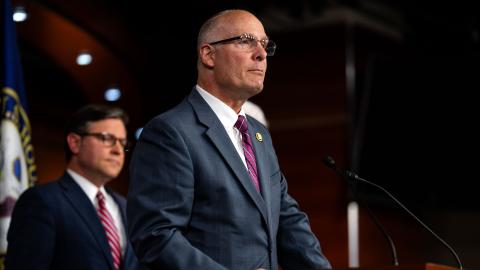A new study has found that it would take two hundred and twenty-eight years for black families to accumulate the same amount of wealth that white families have now, if current policy prescriptions remain in place, a new report has found. The Wall Street Journal:
The stunning estimate is part of a study the two groups released this week on the racial wealth divide in the U.S., highlighting the growing disparity between Americans of color and everyone else, the policies that contributed to a widening divide and proposals to help reverse the trend.
CFED and IPS looked at 30 years of data from the Federal Reserve’s Survey of Consumer Finances, which includes information on Americans’ balance sheets, income, pensions and demographic characteristics.
Over the past 30 years, they found the average wealth of white families has grown by 84%, three times as fast as the rate for African-American families and 1.2 times the growth rate for Latino families.
No program epitomized the boomer progressive synthesis better than the efforts to increase black homeownership launched by the Clinton administration in the 1990s. Using the power of Fannie Mae and a flexible mortgage market, instructions went out to help get more black and minority families in homes of their own.
There is nothing wrong with the idea in many ways. Home ownership has been the foundation of middle class prosperity and wealth accumulation for many American families: $12.5 trillion in home equity, most of it held by middle class households, provides financial security, dignity and stability to millions of American families. I have written at length about how the owner occupied home replaced the owner-occupied farm as the central institution of American life in the 20th century.
While some black families were able to take advantage of the opportunity, many more were not. From the start of the postwar boom through the 1960s, legal barriers kept blacks out of the housing market in many neighborhoods and subdivisions. Blacks who tried to move into white neighborhoods met with mob violence in some cases, but usually other obstacles kept them "in their place". Banks discriminated against African American borrowers, "redlined" neighborhoods where blacks lived, and otherwise helped separate black Americans from the most successful middle class wealth creating mechanism in modern American history.
It was also true that blacks faced serious job discrimination up to and even after the passing of the civil rights legislation. In many unions and skilled trades, the desire of the current workers to pass their jobs from father to son froze minorities out of the best paid jobs that didn’t require a college education. Up until the 1960s, blacks suffered overt racial discrimination in southern college systems. It was only in the 1960s that large numbers of blacks got their feet on the ladder of success in blue model America.
But blue model America was beginning to fall apart just as blacks were finding their place in it. Social security, another of the foundations of middle class prosperity and security, was set up in such a way as to disqualify millions of blacks: agricultural workers and domestic workers were excluded from coverage until the 1950s.
The Clinton efforts to open up the home ownership system to blacks were both well-intentioned and historically justified. Their results, however, were tragic. Essentially, blacks came into the housing market just as the Great Bubble began to build, and through the early 2000s, first-time black home owners were often getting in just as prices reached unsustainable levels. The resulting crash wiped out the net worth of much of the black middle class, and the Obama administration was unable to find good ways to help it recover.
This was made worse by the dependence of the black middle class on government jobs. Government employment was slashed as states, cities and towns laid off workers to balance their budgets in the wake of the Great Recession. Outside government, factory work had offered a growing number of blacks good pay and job security, but automation and globalization struck here, too.
Another problem: much of the black middle class is concentrated in declining blue urban areas. Cities that don’t have a lot of job growth, have high taxes, and a high cost of living are not cities that offer lots of opportunities. And it is in these very cities where immigrants—legal and illegal—offer the toughest competition in the labor market.
Thus we have the paradox that the administration of the first African American president has been one of decline and losing ground for the American black middle class.
This isn’t just a problem for members of the black middle class, or for those hoping to join it. It’s a problem for American society as a whole. At the moment, neither political party seems to have much of an idea about what to do next. The GOP nominee does not seem to have much time for the black middle class, and the Democrats, whose most recent efforts for the black middle class backfired so disastrously and spectacularly, also seem at a loss.
Black America’s problems can’t be solved in isolation. The failure of both Democrats and Republicans to meet the needs of middle class people of all races is the most important single factor that has been polarizing and poisoning American politics. A new generation of policies to address the economic well-being of the middle class in a post-blue world is needed to address the problems of the middle class overall. But these policies need also to ensure that, this time, African Americans will be included in the mix right from the start.
We don’t need a black economic policy or a white economic policy; we need an American economic policy that, given the situation on the ground and the shadows of American history, takes account of the steps needed to see that this time around African Americans aren’t sent to the back of the bus.

















